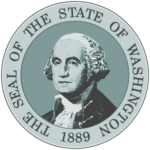Pillar overview
The equity and opportunity pillar provides the broader cultural and political context to help students understand educational equity, why inequities exist, what they look like in everyday settings, and how they can be addressed in positive ways through the implementation of laws, policies, and through educators’ everyday practice and interactions. This pillar extends the culture and identify pillar and provides a foundation for the equity pedagogy pillar — that is, why equity pedagogy is essential. To spark student interest and engagement, it is recommended to start with student experiences of schooling and school systems, move to local examples of how school/district policies or state laws/policies have impacted student rights and access to public education, then connect to federal laws, policies and history to understand how we got to where we are.
Competencies
Students will…
- Understand that current commitments to equity and diversity are deeply connected to our democratic ideals and part of a long struggle for educational equity and opportunity.
- Apply knowledge of how schools are governed at federal, state, local, school and classroom levels to identify possible avenues of action to address a current issue in education.
- Research and present one issue of civil rights in education, tracing the history and current status of laws, policies, practices and educator responsibility to address civil rights through policy, practice, and interaction.
Essential questions
- What is the purpose of public schools in the USA?
- What is the opportunity gap and what can we as mentors/ teachers do to support ALL students to succeed?
- What are historical and current theories about why select groups of students succeed in school while others are failed by schools?
- How can history, laws, policies and collective action support us to close the opportunity gap?
- How do these laws and policies influence the everyday experiences of students and teachers in schools?
- How can teachers work successfully with families and communities to support students’ success?
Desired results
Students will be able to…
- Recognize the current commitment to equity and diversity as deeply connected to our democratic ideals and part of a long struggle for educational equity and opportunity.
- Understand how schools are governed at federal, state, local, school and classroom levels.
- Make connections between educational equity at the level of policy, practice, and interaction.
- Develop a sense of agency that they can make a difference by addressing everyday injustices.
Students will understand that…
- Membership in some ethnic/ cultural groups, historically and currently, offers privilege to some and marginalizes others including access to quality education.
- Laws and policies can be a vehicle to overcome discrimination but may also inadvertently serve to increase inequity.
- Both individually and collectively we can make a difference in the lives of individuals and for groups of students.
Students will know…
- Current and historical issues in education
- Landmark legal cases and movements that have advanced educational equity
- Laws, policies, finance and governance affecting education
Students will be skilled at…
- Making connections across history to the present and from societal to interpersonal levels.
- Summarizing and representing legal and historical information visually and orally.

